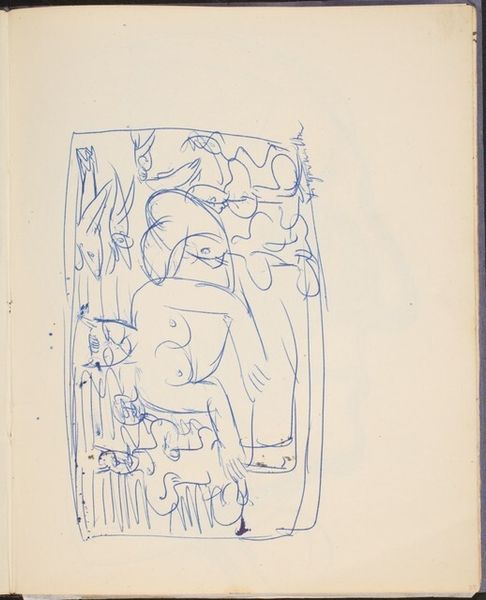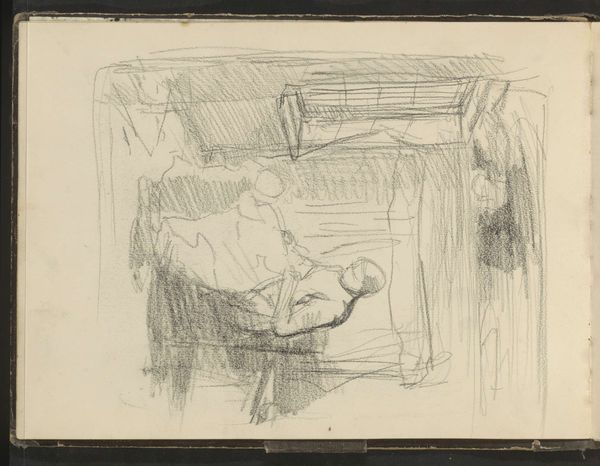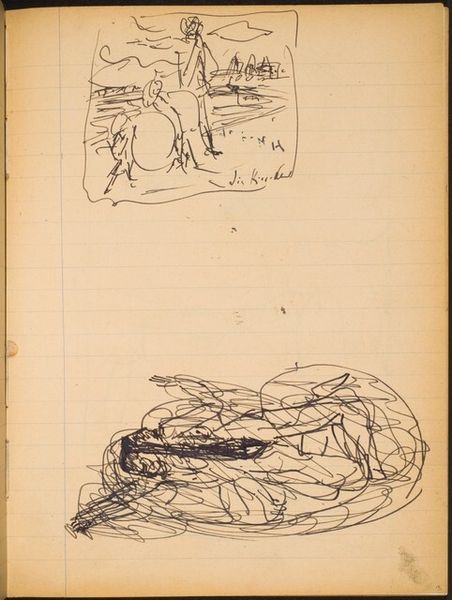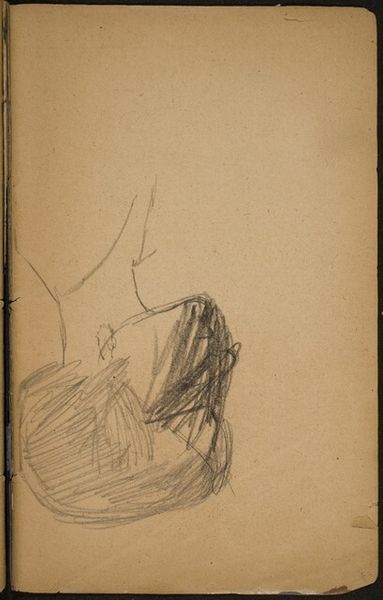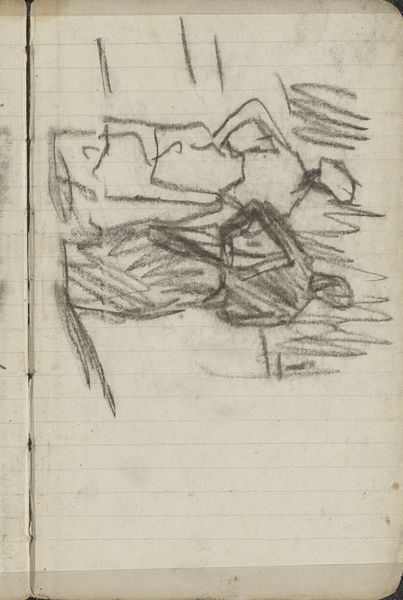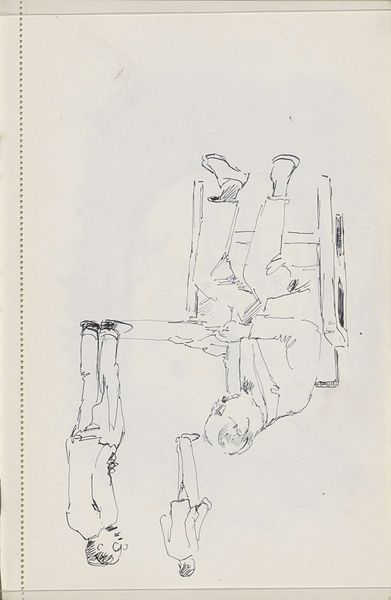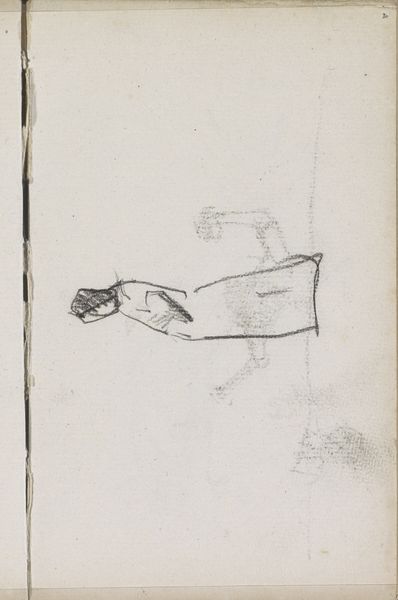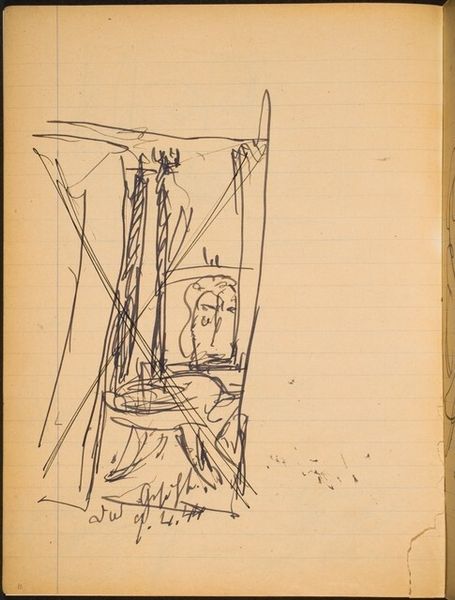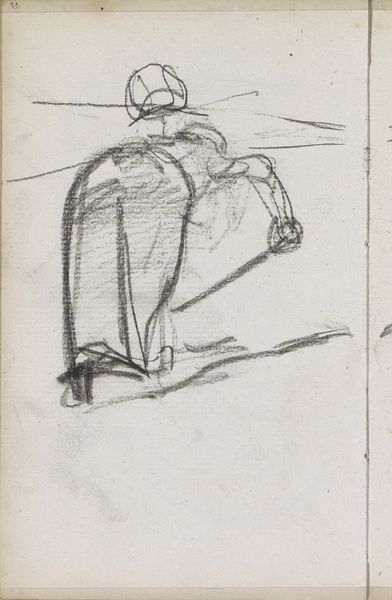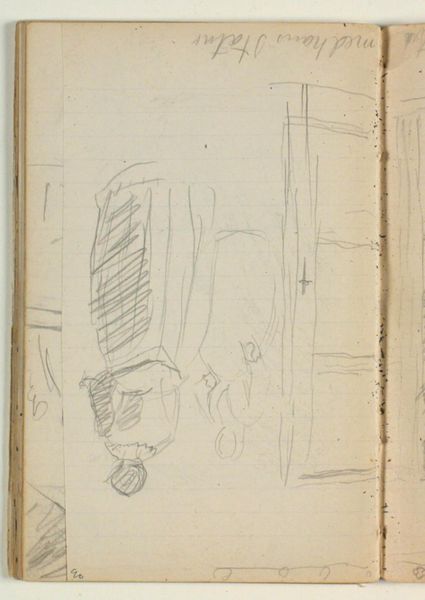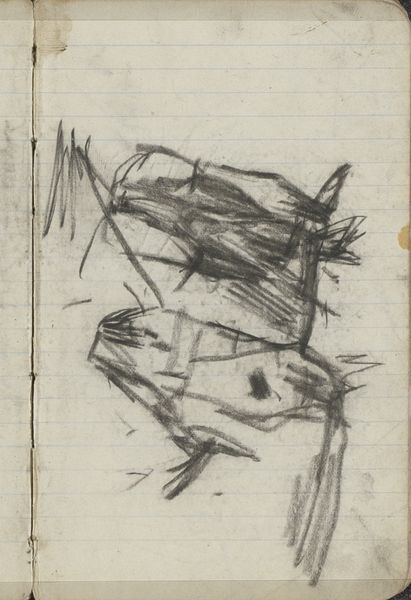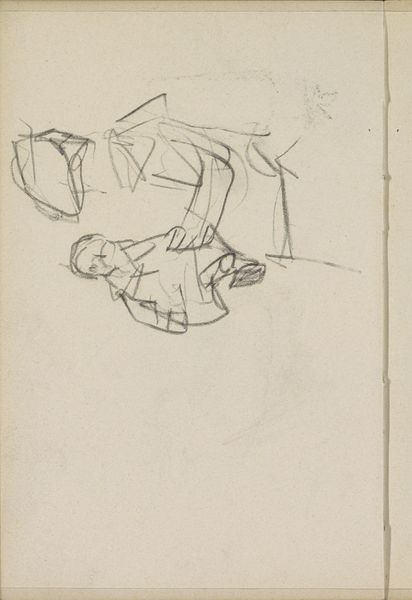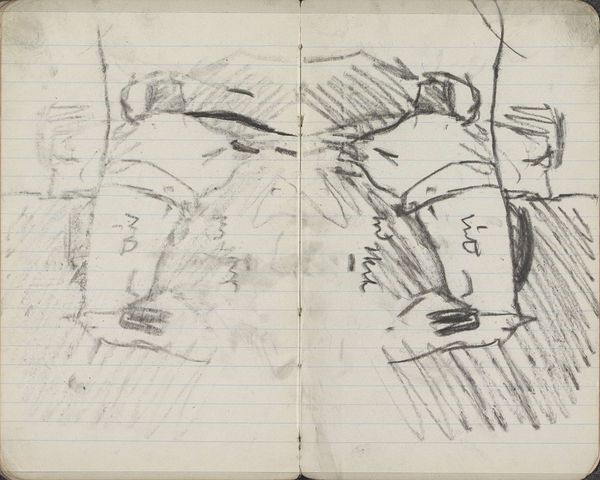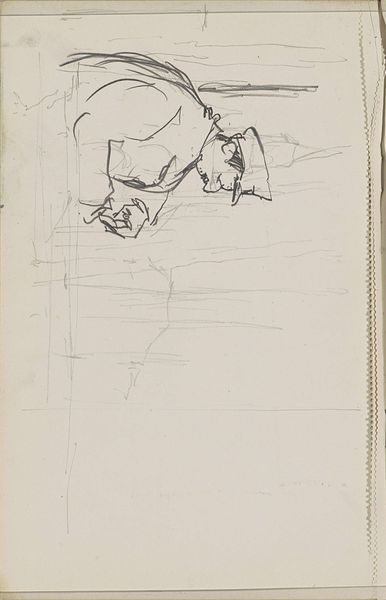![Skizze (Sketch) [p. 35] by Max Beckmann](/_next/image?url=https%3A%2F%2Fd2w8kbdekdi1gv.cloudfront.net%2FeyJidWNrZXQiOiAiYXJ0ZXJhLWltYWdlcy1idWNrZXQiLCAia2V5IjogImFydHdvcmtzLzdkNWI5OWY2LWFhMTEtNGIwMy04ZjNhLWRkNGFhZDRhNWUzYS83ZDViOTlmNi1hYTExLTRiMDMtOGYzYS1kZDRhYWQ0YTVlM2FfZnVsbC5qcGciLCAiZWRpdHMiOiB7InJlc2l6ZSI6IHsid2lkdGgiOiAxOTIwLCAiaGVpZ2h0IjogMTkyMCwgImZpdCI6ICJpbnNpZGUifX19&w=828&q=75)
drawing, coloured-pencil
#
portrait
#
drawing
#
coloured-pencil
#
coloured pencil
#
expressionism
Dimensions: page size: 15.2 x 9.5 cm (6 x 3 3/4 in.)
Copyright: National Gallery of Art: CC0 1.0
Curator: Welcome. We are looking at “Skizze (Sketch) [p. 35]” by Max Beckmann, likely created between 1914 and 1915. It's a coloured pencil drawing. What are your initial thoughts? Editor: Austere. There’s something haunting about the emptiness around the figure; they appear boxed-in, trapped. It's intriguing, but stark. You can see the page beneath, with other writing on it. Curator: Yes, its rawness is palpable. Given its creation during the early years of World War I, its somber tone is perhaps unsurprising. Beckmann himself served as a medical orderly. This could have definitely influenced the content. Editor: I see it in the medium itself – colored pencil on what seems like a page torn directly from a sketchbook. The immediate and accessible nature of the materials speaks to the conditions under which it was likely created – perhaps during short respites between his medical duties. Curator: Absolutely. The hasty quality underlines the context. Expressionism, which this reflects, sought to convey intense emotion. Notice how the lack of detail directs our attention toward the emotional state of the subject. Editor: It really highlights the physicality of drawing – the hand moving, pressing pencil to paper, building form out of lines. You can almost feel Beckmann wrestling with the materials as he visualizes the realities of the war that impacted him. Curator: And Beckmann was deeply concerned with the individual in the face of broader social upheaval. How could one create under these difficult circumstances, and what social role would that work play? That struggle is mirrored by his visual economy. Editor: A really beautiful articulation of that historical struggle as represented by Beckmann through readily available art making methods. One could feel that pain looking at just the colored pencil and a simple sketch! Curator: I agree. The combination of such mundane, familiar methods used in creating a painful historical image makes the experience of the image that much more emotionally visceral. Editor: For me it's powerful because it lays bare the conditions of its making – revealing art's power to distill experience even with limited means, so thank you for highlighting such important features, historically and artistically!
Comments
No comments
Be the first to comment and join the conversation on the ultimate creative platform.
